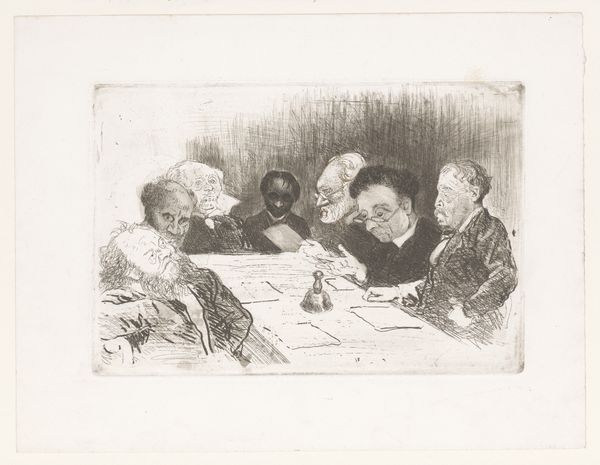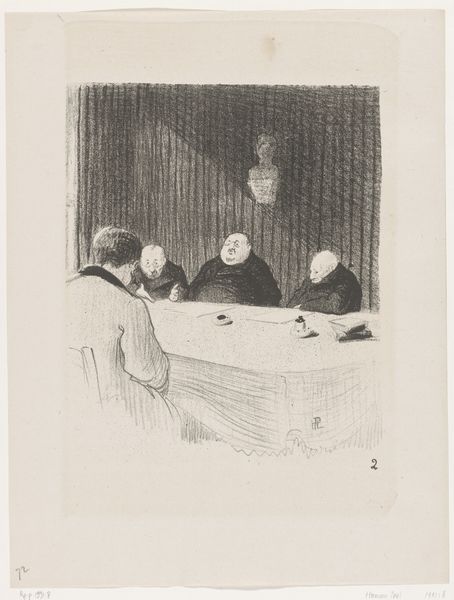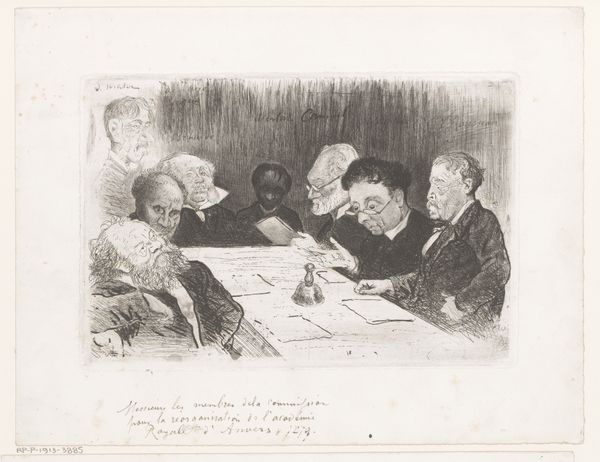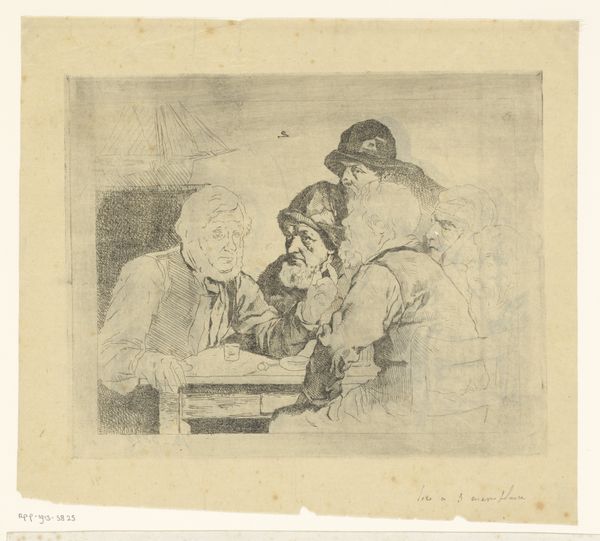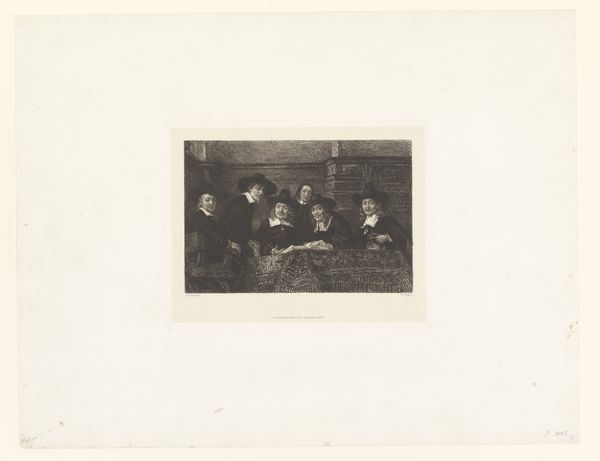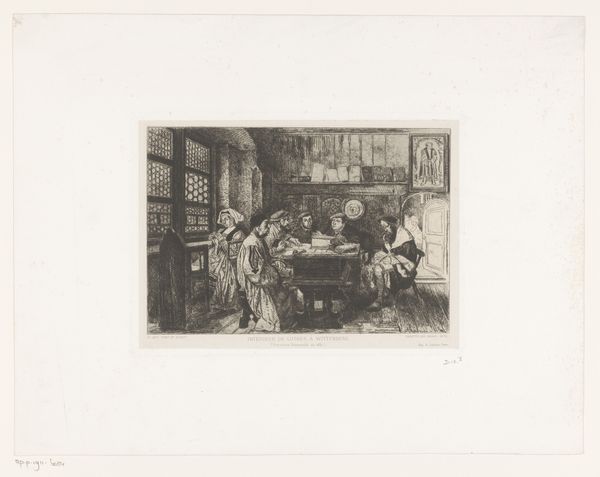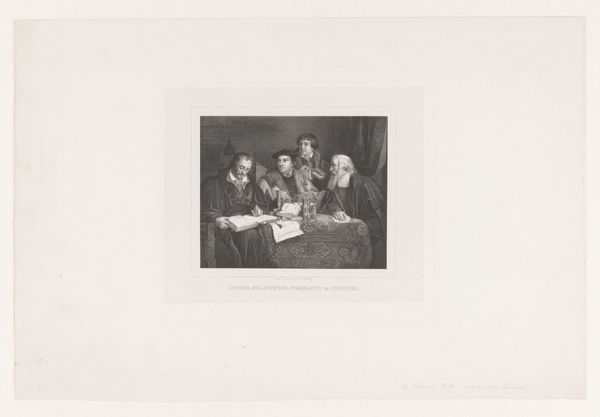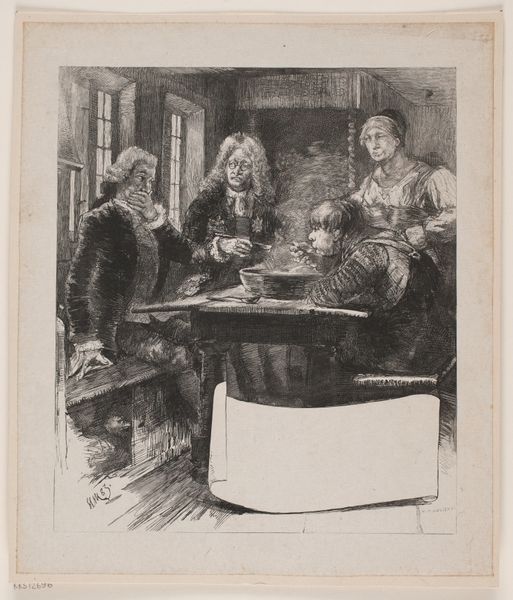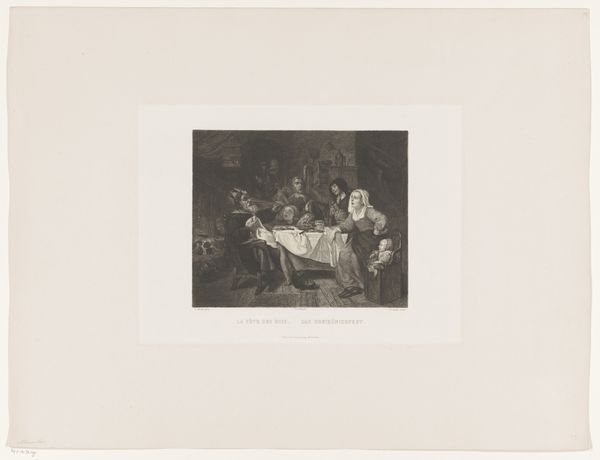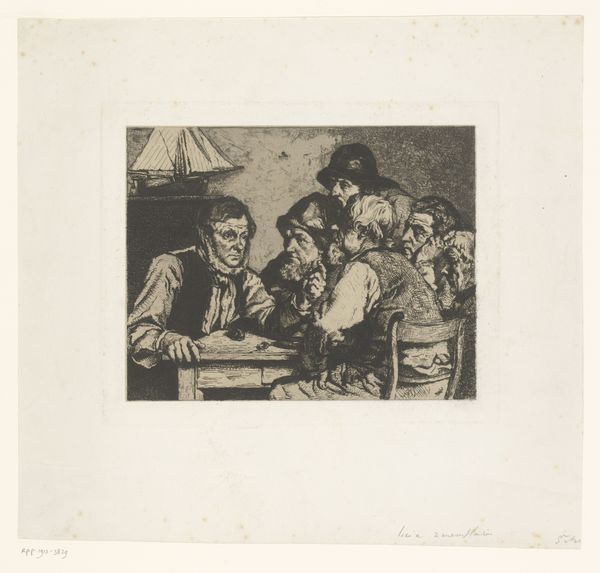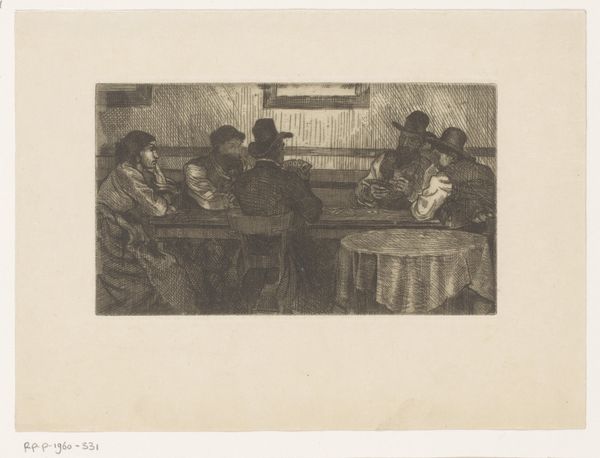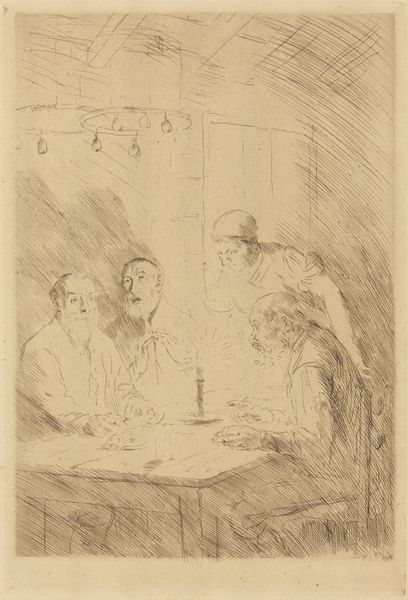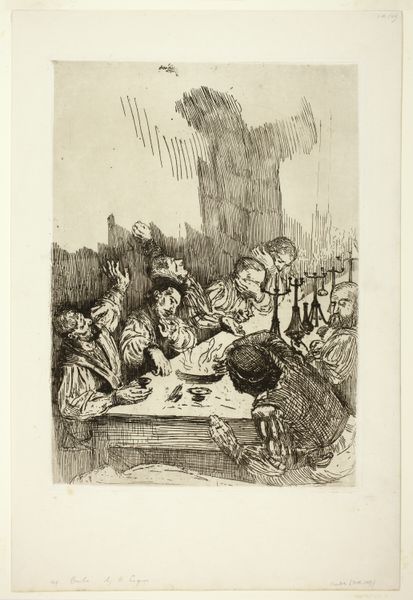
print, etching
#
portrait
# print
#
etching
#
group-portraits
#
academic-art
Dimensions: height 188 mm, width 271 mm
Copyright: Rijks Museum: Open Domain
Curator: Let's turn our attention to this etching by Charles Verlat from 1879, titled "Commissie voor reorganisatie van de Antwerpse Academie"—The Commission for Reorganization of the Antwerp Academy. What strikes you immediately? Editor: The palpable sense of deliberation. Everyone's hunched over documents, pens poised. You can almost hear the scratching of nibs and hushed whispers. There is something very laborious about its creation—all those tiny lines to form one single print. Curator: Indeed. This image depicts a real committee assembled to reform the Antwerp Academy, a historically significant institution in European art education. Verlat, who was himself a prominent academic painter, presents a very interesting scene. Editor: It’s also interesting to think about how the final image, which gives us all these details, begins. Starting with a blank copper plate, etching tools, acid…it's a world of difference from today's digital design processes, right? How much time to prepare and create an image this way? Curator: Absolutely. The choice of etching is also telling. The medium lent itself to the meticulous, detail-oriented work needed to portray such a serious group of individuals engaged in a weighty task. The stark contrast adds a sense of gravitas. What’s most revealing is not necessarily the faces, but the books, papers and even the furniture around this table, objects and people mixed in a public display. Editor: The way the figures are crammed around the table, some in deeper shadow than others, it speaks to me of the behind-the-scenes labour involved in artistic institutions—the meetings, the reviews, the reorganizations this image references. So much bureaucracy shaping artistic practices! Curator: Exactly. It is an interesting image to contemplate at this historical distance, inviting us to consider how the structure of art education reflects broader cultural values. Editor: Absolutely, it brings into sharp focus the material and institutional underpinnings of what we consider art. Curator: I find it very informative to observe how social structures materialize in art, and what it reveals about how values were presented at the time. Editor: To think of how academic rigor gets translated from raw material into something intellectual that remains visible through this image for us now is very illuminating.
Comments
No comments
Be the first to comment and join the conversation on the ultimate creative platform.
